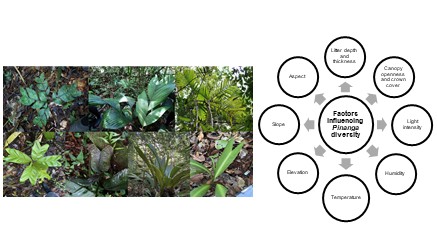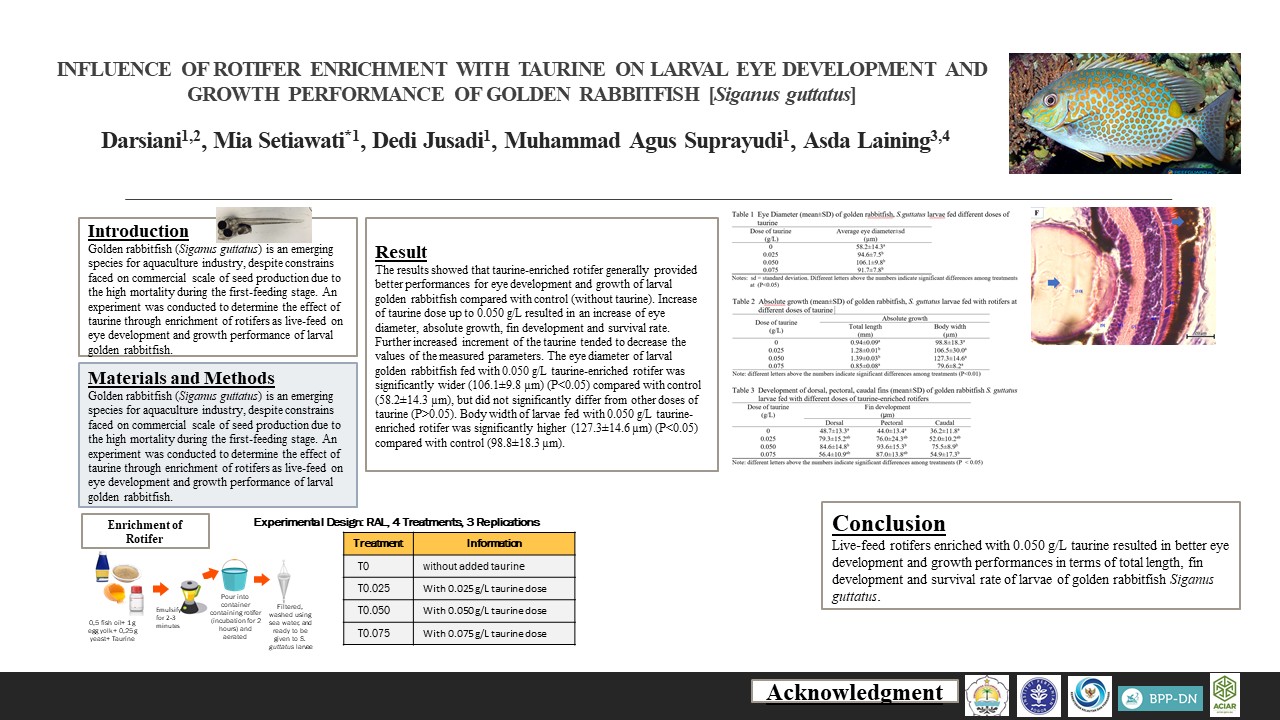EVALUATION OF METHODS FOR TOTAL RNA EXTRACTION FROM THE ENDOSPERM OF COCOS NUCIFERA VAR. MAKAPUNO IN VIETNAM FOR MOLECULAR ANALYSIS
Downloads
Sap coconut (Cocos nucifera L. var. makapuno) in Vietnam is a mutant coconut variant; coconut water is in the state of lotus glue, and coconut rice is like cream. For high-quality transcriptome, sequencing, quality, purity and concentration of RNA are the key factors. However, coconut endosperm tissue has higher stiffness and fatness than the leaf tissue, which complicates the extraction process. Moreover, RNA is much more difficult to preserve than DNA. In this study, various RNA extraction methods were examined in Vietnamese waxy coconut endosperm tissue samples. Optimum extraction and preservation of the RNA using the simplest possible chemicals was the objective of this study. The modified CTAB method with LiCl and the TRI reagent method were tested and evaluated. The purity, concentration and quality of RNA after storage were improved. The findings indicated that the TRIsure extraction method with the addition of NaCl and β-mercaptoethanol yielded optimum RNA quality. The RNA concentration was 159 ng/µL, with a purity ratio of 1.94 ± 0.04 for A260/A280 and 1.58 ± 0.02 for A260/230. RNA samples remained stable for up to 3 weeks when stored in absolute ethanol at 8°C–10°C, which significantly reduced their degradation during transportation. This study facilitated the use of simple chemicals for high-quality RNA extraction from coconut endosperm and its preservation for applications in high throughput sequencing.
Downloads
Angeles, J. G., A. Laurena and E. Tecson-Mendoza (2005). "Extraction of genomic DNA from the lipid-, polysaccharide-, and polyphenol-rich coconut (Cocos nudfera L.)." Plant Molecular Biology Reporter - PL MOL BIOL REP 23: 297-298. DOI: https://doi.org/10.1007/BF02772760
BIOLINE. (2023). "TRIsure™ Reagent User Guide." from https://www.bioline.com/mwdownloads/download/link/id/953/trisure_pro-.
Chang, S., J. Puryear and J. Cairney (1993). "A simple and efficient method for isolating RNA from pine trees." Plant Molecular Biology Reporter 11(2). DOI: https://doi.org/10.1007/BF02670468
Cruz, R. and V. J. D. Bugayong (2016). "Mutations in the alpha-D-galactosidase gene suggest molecular basis of the mutant" makapuno" coconut (Cocos nucifera L.) phenomenon." Philippine Agricultural Scientist 99(4): 321-325.
Fan, H., Y. Xiao, Y. Yang, W. Xia, A. S. Mason, Z. Xia, F. Qiao, S. Zhao and H. Tang (2013). "RNA-Seq analysis of Cocos nucifera: transcriptome sequencing and de novo assembly for subsequent functional genomics approaches." PloS one 8(3): e59997. DOI: https://doi.org/10.1371/journal.pone.0059997
Fang, G., S. Hammar and R. Grumet (1992). "A quick and inexpensive method for removing polysaccharides from plant genomic DNA." BioTechniques 13(1).
fisher, T. (2010). "TRIzol™ Reagent User Guide." from https://tools.thermofisher.com/content/sfs/manuals/trizol_reagent.pdf.
Fordyce, S. L., M. L. Kampmann, N. L. van Doorn and M. T. P. Gilbert (2013). Long-term RNA persistence in postmortem contexts. Investigative Genetics. 4. DOI: https://doi.org/10.1186/2041-2223-4-7
Ghangal, R., S. Raghuvanshi and P. Chand Sharma (2009). "Isolation of good quality RNA from a medicinal plant seabuckthorn, rich in secondary metabolites." Plant Physiol Biochem 47(11-12): 1113-1115. DOI: https://doi.org/10.1016/j.plaphy.2009.09.004
Hong, M., S. Tao, L. Zhang, L.-T. Diao, X. Huang, S. Huang, S.-J. Xie, Z.-D. Xiao and H. Zhang (2020). "RNA sequencing: new technologies and applications in cancer research." Journal of Hematology & Oncology 13(1): 166. DOI: https://doi.org/10.1186/s13045-020-01005-x
Iandolino, A. B., F. Goes Da Silva, H. Lim, H. Choi, L. E. Williams and D. R. Cook (2004). "High-quality RNA, cDNA, and derived EST libraries from grapevine (Vitis vinifera L.)." Plant Molecular Biology Reporter 22(3). DOI: https://doi.org/10.1007/BF02773137
Iqbal, A., Y. Yang, R. Qadri, Y. Wu, J. Li, F. Shah, M. Hamayun and A. Hussain (2019). "QRREM method for the isolation of high-quality RNA from the complex matrices of coconut." Bioscience Reports 39(1). DOI: https://doi.org/10.1042/BSR20181163
Iqbal, A., Y. Yang, Y. Wu, J. Li, M. Hamayun, A. Hussain and F. Shah (2020). "An easy and robust method for the isolation of high quality RNA from coconut tissues." Electronic Journal of Biotechnology 48. DOI: https://doi.org/10.1016/j.ejbt.2020.09.008
Kumar, K. D., R. Gautam, I. Ahmad, S. D. Roy and A. Sharma (2015). "Biochemical, genetic and molecular basis of the novel and commercially important soft endosperm Makapuno coconut-A review." Journal of Food, Agriculture & Environment 14(1): 61-65.
Lado, J. P., B. Z. Arellano, C. A. L. Osio, B. J. T. Tendero, C. de la Vina, M. A. O. Torio, R. P. Laude and M. G. Q. Diaz (2019). "Early differential expression of galactomannan biosynthesis genes in ‘Makapuno’ coconut (Cocos nucifera L.) revealed by the de novo assembly and analysis of endosperm transcriptome." Philipp Agricul Sci 102: 6-24.
Li, Z. and H. N. Trick (2005). "Rapid method for high-quality RNA isolation from seed endosperm containing high levels of starch." BioTechniques 38(6). DOI: https://doi.org/10.2144/05386BM05
Liu, L., R. Han, N. Yu, W. Zhang, L. Xing, D. Xie and D. Peng (2018). "A method for extracting high-quality total RNA from plant rich in polysaccharides and polyphenols using Dendrobium huoshanense." PLOS ONE 13(5): e0196592. DOI: https://doi.org/10.1371/journal.pone.0196592
Lodhi, M. A., G. N. Ye, N. F. Weeden and B. I. Reisch (1994). "A simple and efficient method for DNA extraction from grapevine cultivars and Vitis species." Plant Molecular Biology Reporter 12(1). DOI: https://doi.org/10.1007/BF02668658
Minitab Inc. (2020). "Minitab 17 Statistical Software." from http://www.minitab.com/.
Mommaerts, K., I. Sanchez, F. Betsou and W. Mathieson (2015). "Replacing β-mercaptoethanol in RNA extractions." Analytical Biochemistry 479. DOI: https://doi.org/10.1016/j.ab.2015.03.027
Mujer, C. V., D. A. Ramirez and E. M. T. Mendoza (1984). "α-D-Galactosidase deficiency in coconut endosperm: its possible pleiotropic effects in Makapuno." Phytochemistry 23(4): 893-894. DOI: https://doi.org/10.1016/S0031-9422(00)85051-7
Mutz, K.-O., A. Heilkenbrinker, M. Lönne, J.-G. Walter and F. Stahl (2013). "Transcriptome analysis using next-generation sequencing." Current opinion in biotechnology 24(1): 22-30. DOI: https://doi.org/10.1016/j.copbio.2012.09.004
Nguyễn Văn Đồng, Đinh Thị Thu Ngần, Tống Thị Hường, Nguyễn Hữu Kiên, Nguyễn Thị Hòa, Lê Thị Mai Hương, Đinh Thị Mai Thu, Nguyễn Nhất Linh and Phạm Thị Phương Thúy (2021). "Nghiên cứu nâng cao tỷ lệ tạo cây hoàn chỉnh in vitro trong quá trình nuôi cấy phôi dừa Sáp (Makapuno coconuts)." Tạp chí Nông nghiệp & Phát triển nông thôn 4: 16-22.
Orek, C. O. (2018). "An Optimised Cetyltrimethylammonium Bromide (CTAB)-Based Protocol for Extracting RNA from Young and Old Cassava Leaves." Journal of Advances in Biology & Biotechnology 19(4). DOI: https://doi.org/10.9734/JABB/2018/45370
Phạm Thị Phương Thúy, Lê Trúc Linh, Đoàn Văn Hâu and Nguyễn Ngọc Trai (2016). "Báo cáo tổng kết đề tài “Nhân giống dừa Sáp bằng phương pháp nuôi cấy phôi tại tỉnh trà Vinh”."
Samonte, J. L., E. M. T. Mendoza, L. L. Ilag, B. Norberto and D. A. Ramirez (1989). "Galactomannan degrading enzymes in maturing normal and makapuno and germinating normal coconut endosperm." Phytochemistry 28(9): 2269-2273. DOI: https://doi.org/10.1016/S0031-9422(00)97966-4
Souza-Perera, R. A., N. Torres-Hernández and J. J. Zúñiga-Aguilar (2018). Extraction of high quality RNA from hard tissues of adult coconut palms.
Sukendah, S., H. Volkaert and S. Sudarsono (2009). "Isolation and analysis of DNA fragment of genes related to kopyor trait in coconut plant." Indonesian Journal of Biotechnology 14(2).
ThermoFisher, S. (2023). "Ribosomal RNA Sizes." from https://www.thermofisher.com/vn/en/home/references/ambion-tech-support/rna-isolation/ general-articles/ribosomal-rna-sizes.html.
Trần Thị Ngọc Thảo (2010). "Báo cáo tổng kêt đề tài “Nghiên cứu cải tiến qui trình công nghệ nhân giống dừa sáp”." Trường ĐH Trà Vinh.
Trương Quốc Ánh (2012). "Báo cáo tổng kết đề tài “Nghiên cứu ứng dụng phương pháp nuôi cấy phôi soma từ chối mầm để nhân giống nh sát đặt ruột tại tỉnh Trà Vinh."
UCONN Health. (2017). "Total RNA extraction using Trizol reagent." from https://health.uconn.edu/li-lab/wpcontent/uploads/sites/129/2017/06/total_rna_extraction.pdf.
Võ Minh Hải, Phạm Thị Phương Thuý, Lê Vĩnh Thúc and Nguyễn Bảo Toàn (2021). "Nghiên cứu ảnh hưởng của một số yếu tố nuôi cấy in vitro đến quá trình tạo rễ cây dừa Sáp (Makapuno coconut) cấy phôi." Tạp chí Khoa học Trường Đại học Cần Thơ 57(2B): 127-134. DOI: https://doi.org/10.22144/ctu.jvn.2021.046
Wang, G., G. Wang, X. Zhang, F. Wang and R. Song (2012). "Isolation of high quality RNA from cereal seeds containing high levels of starch." Phytochem Anal 23(2): 159-163. DOI: https://doi.org/10.1002/pca.1337
Wang, L. and J. P. Stegemann (2010). "Extraction of high quality RNA from polysaccharide matrices using cetlytrimethylammonium bromide." Biomaterials 31(7). DOI: https://doi.org/10.1016/j.biomaterials.2009.11.024
White, E. J., M. Venter, N. F. Hiten and J. T. Burger (2008). "Modified Cetyltrimethylammonium bromide method improves robustness and versatility: The benchmark for plant RNA extraction." Biotechnology Journal 3(11): 1424-1428. DOI: https://doi.org/10.1002/biot.200800207
Zhang, Y., J. Kan, M. Tang, F. Song, N. Li and Y. Zhang (2022). "Chemical Composition, Nutritive Value, Volatile Profiles and Antioxidant Activity of Coconut (Cocos nucifera L.) Haustorium with Different Transverse Diameter." 11(7). DOI: https://doi.org/10.3390/foods11070916
Copyright (c) 2023 Thanh-Diem Nguyen, Huyen-Trang Vu

This work is licensed under a Creative Commons Attribution-NonCommercial-NoDerivatives 4.0 International License.
Authors who publish with this journal agree with the following terms:
- Authors retain copyright and grant the journal right of first publication, with the work 1 year after publication simultaneously licensed under a Creative Commons attribution-noncommerical-noderivates 4.0 International License that allows others to share, copy and redistribute the work in any medium or format, but only where the use is for non-commercial purposes and an acknowledgement of the work's authorship and initial publication in this journal is mentioned.
- Authors are able to enter into separate, additional contractual arrangements for the non-exclusive distribution of the journal's published version of the work (e.g., post it to an institutional repository or publish it in a book), with an acknowledgement of its initial publication in this journal.
- Authors are permitted and encouraged to post their work online (e.g., in institutional repositories or on their website) prior to and during the submission process, as it can lead to productive exchanges, as well as earlier and greater citation of published work (See The Effect of Open Access).


























